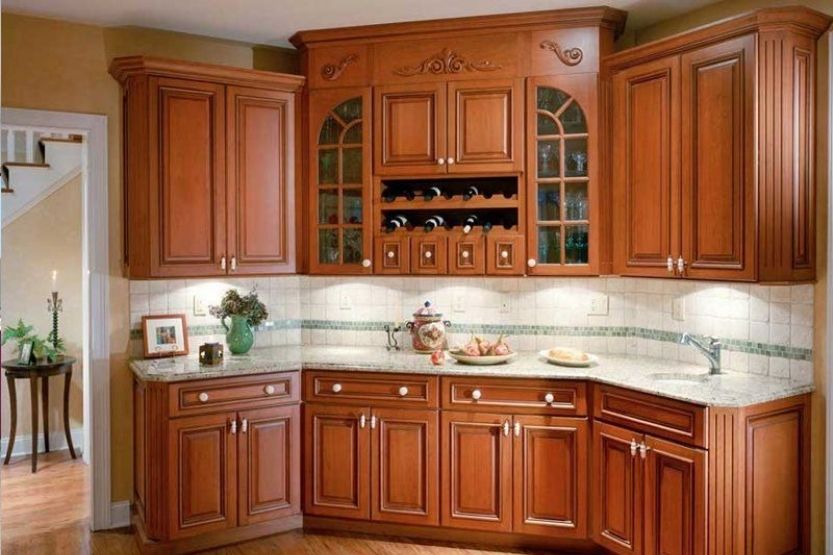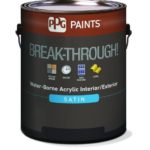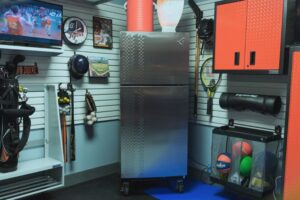If you’re into home DIY projects, don’t you wish you could stain your furniture without having to strip off the old finish? This is possible with Stainable Primer™. What exactly is Stainable Primer™?
Stainable Primer™ is a revolutionary product in which you can make surfaces stainable without stripping off the existing finish. This product is biodegradable, water-based, odorless, and causes no damage to the environment. It is a recommended product not only for professional painters but also for inexperienced homeowners.
Read on to learn more about Stainable Primer™, its uses, and how to apply it.
Stainable Primer

Stainable Primer is a promising product that lets you make surfaces stainable without stripping off the existing finish. This product is biodegradable, water-based, odorless, and causes no damage to the environment. It is a recommended product not only for professional painters but also for inexperienced homeowners.
Brief History
A hobby chemist developed this product in 2008 for his wife, who wished to replace cabinets in their kitchen with stained ones. But replacing or refacing cabinets and other furniture was not only a tedious job. It also entailed high costs.
So, the husband decided to concoct a wood-based product he could apply to surfaces conveniently. Once applied and dried, the results are stained surfaces. After doing extensive research for years, Stainable Primer was successfully developed. [1]
A Product Like No Other
Stripping the old finish of surfaces is such a time-consuming job, not to mention a tedious one too. The absorption and adhesion properties of Stainable Primer are of superior quality. Once you complete a project using this product, you will notice that your new finish is chip and scratch-resistant.
The best thing about Stainable Primer is that you can apply any brand of stain or paint over it. It doesn’t matter if it is cheap or expensive. You will surely achieve the look and finish you desire for your surfaces by merely using Stainable Primer.
Where Can You Use Stainable Primer?
Stainable Primer may not only be used on wood surfaces. You can apply it on any surface. With Stainable Primer, you will make the surfaces appear as if they are made of wood.
You may apply it on the following:
- Particleboard,
- Painted wood, or
- Medium-density fibreboard (MDF) cabinets.
If you have metal or plastic furniture, you may also apply Stainable Primer on them. Make them appear as if they are dazzling wood furniture.
If you want to make stunning stained trim, you may do so too—first, source out inexpensive wood, MDF, or PVC molding. Then, apply Stainable Primer on it, and then apply your desired stain or paint.
Turn your composite, fiberboard, or metal door into an impressive wood finish. If you have a carpeted staircase, you can transform it and appear to have a stained wood finish. All you have to do is remove the carpet, apply Stainable Primer, and then apply your desired stain and paint.
How to Apply the Stainable Primer?
You can apply the Stainable Primer on any surface that you want to turn into something that would make it appear as if it is made of wood.
For instance, if you have a metal door with damaged paint, you can repaint it and make it look as if it is made of wood. Just wipe the door clean in case it is dusty.
Once you have wiped off the dust, apply Stainable Primer on it evenly using a paintbrush. Your paintbrush doesn’t have to be an expensive one. A cheap one can already do the trick. Just make sure that its bristles are intact and won’t stick on the surface.
How Many Coats of Stainable Primer Should Be Applied?
Typically, a single coat of Stainable Primer is already enough. But it still depends on the surface you are applying it on. So, in case you think that it needs another coat, feel free to apply another coat. Always remember too to apply the Stainable Primer evenly.
Also, you will notice that this primer has wood particles in it. It is supposed to do the trick to make your finished product appear as if it is made of wood.
After applying a single coat or two, let it dry for about 24 hours. Then, lightly sand the primer with 220 grit sandpaper. Once done, apply your desired stain or paint on it. Remember that you can use a real wood finish over the primer.
Application of Stain or Paint
To apply the stain or paint, brush it evenly on the surface. While doing this, you will notice how the stain is absorbed effectively. Once you are done, witness how your metal door has successfully become a lovely wood door!
Feel free to glaze the door to make it look glossy or matte, depending on your preference. After you have completed your project, try scratching a small part of it. You will notice how Stainable Primer can make surfaces scratch and chip resistant.
In case you have any doubts about Stainable Primer’s effectiveness, try it first with small projects. You might have an old bar stool. Try to refurbish it by first applying Stainable Primer. Certainly, you will love the result, and it will make you want to repaint every surface in your home!
Features of Stainable Primer

To date, Stainable Primer is the sole product that will not require users to remove existing paint, polyurethane, stain, or other forms of coating. There is definitely no need to strip or sand existing paint or finish.
Stainable Primer works effectively with any paint or stain. It is water-based with low volatile organic compounds (VOC) and also provides superb stain blocking.
This product comes in 1 quart of the can (4.25 x 4.25 x 5 inches). It is 3 pounds in weight and was initially launched in the United States on June 18, 2014.
Basically, this product transforms any hard surface into stainable wood surfaces. It consists of real wood particles. This means that you are literally applying a thin layer of wood when applying it on the surface.
You might be wondering, what type of hard surfaces does Stainable Primer bond with? Well, it bonds well to stained, painted, or raw surfaces such as:
- Wood
- Drywall
- Glass
- Formica
- Vinyl
- PVC or Plastic
- Fiberglass
- Metal
- Wood Veneers
- MDF or Fiberboard
Once you apply Stainable Primer on any of these, you can then apply any type of paint, stain, or color.
So, basically, Stainable Primer is ideal for various types of refinishing projects. Among these are the following:
- Home redecorating such as lamps, ceramics, picture frames, etc.
- Outdoor Metal furniture refinishing
- Indoor Furniture refinishing
- Outdoor PVC furniture refinishing
- Home remodeling such as beadboard, stairs, doors, windows, trim, etc.
- Cabinet refinishing
A quart of Stainable Primer can roughly cover projects measuring 100 sq. ft.
Stainable Primer’s User-Friendliness
There’s no denying that you may use Stainable Primer for small projects at home. But you can amazingly use this for big projects as well.
A couple was living in a multimillion-dollar home. They wanted to renovate their house, which entailed the replacement of aged natural finished beadboard ceilings. For the ceilings alone, the job to rip them off and reinstall them is not only a tedious one.
But it would literally cost tens of thousands of dollars. While the couple most likely had the money for that, they did not want to spend too much money on it.
The couple was already having second thoughts about their renovation project until they learned about Stainable Primer. They were able to renovate their home at a lower cost because of this product. At the same time, the contractor prevented the project from getting canceled. And the result? The contractor gained more projects all because of Stainable Primer.
Stainable Primer is truly a promising product. It can amazingly make surfaces stainable without stripping off the existing finish. This product is biodegradable, water-based, odorless, and causes no damage to the environment. It is a recommended product not only for professional painters but also for inexperienced homeowners.
So far, in this Stainable Primer review, we have looked at the benefits of Stainable Primer and how to apply it. Next, let’s look at some frequently asked questions regarding this Primer.
Frequently Asked Questions

Can You Apply Gel Stain Over the Primer?
Yes, you may apply gel stain over Stainable Primer.
You can basically apply any paint or stain on it. Even regular stain, which is also called wiping or penetrating stain, can work well on this primer. It will not appear as if the layer is too thin.
Will This Peel or Chip Over Time?
Those who bought Stainable Primer a year or two ago can attest to the high quality of this product.
One homemaker refurbished their front door two years ago. They bought Stainable Primer on Amazon. Up until now, their front door looks as good as new. It has not chipped or peeled and has withstood different weather conditions since it is used as their main door.
Also, what makes it more impressive is that their door looks very expensive. Moreover, they saved money, but they also saved a lot of time doing the project.
Since It Is a Water-based Product, Should I Also Use Water-based Polyurethane?
Once you have applied Stainable Primer on the surface, wait for it to dry up fully. Then, you can start applying any paint or stain, or color on it. It doesn’t have to be water-based polyurethane. You can even use oil-based stain or paint.
Can This Be Used on Exteriors Such as a Garage Door?
Yes, it works effectively on both interiors and exteriors. As long as the surface is clean before application, feel free to apply Stainable Primer on it evenly.
You can apply a single coat or two on the surface, but it all depends on its condition. You will know, anyway, if the surface needs additional coating. Please remember, though, that the thicker the layer, the longer its drying time should be. So, for two coats of Stainable Primer, you might have to wait for 24 hours before it fully dries up.
Once it is dried, you can sand it a bit to make the surface a lot more even, but this is optional. In most cases, this is not required anymore. Then, you can apply paint or stain to it. Once it dries, it is advisable to glaze or seal it since the garage door is exposed to all weather conditions.
Would One Quart of Stainable Primer Be Able to Cover a 4′ x 5′ Book Case, a Standard Sized Coffee Table, and Two End Tables?
A quart of Stainable Primer can cover about 87 to 100 sq ft of refinishing projects. This looks most likely enough to cover a bookcase, a standard-sized coffee table, and a couple of end tables.
Will I Be Able to Make an Old Painted Banister Look Like a New One with Stain Wood Finish?
Yes, you can transform your old painted banister into a new one with a stain wood finish. You don’t even have to remove the old and damaged paint anymore. There is no need to peel it off and sand it to make them even. You only need to ensure that the banister is clean and free of dirt before primer application.
What Is the Drying Time Before Applying Whatever Product You Will Use over It?
Typically, the drying time for a single coat of Stainable Primer is about 2 to 3 hours. But most customers who have tried using the product decided to wait for additional hours. This is to make sure that the primer is totally dry.
For two layers of coating, you might have to wait for long hours. Again, most customers prefer to allow it to dry overnight. That way, they are assured that the primer is totally dry.
Conclusion – Stainable Primer Review
Stainable Primer is a revolutionary product in which you can make surfaces stainable without stripping off the existing finish. This product is biodegradable, water-based, odorless, and causes no damage to the environment. It is a recommended product not only for professional painters but also for inexperienced homeowners.
This product is a highly recommended one since it can make DIY refinishing projects easy, convenient, practical, and economical.
For your reference, you can use this product in the following materials:
- Wood
- Drywall
- Glass
- Formica
- Vinyl
- PVC or Plastic
- Fiberglass
- Metal
- Wood Veneers
- MDF or Fiberboard









